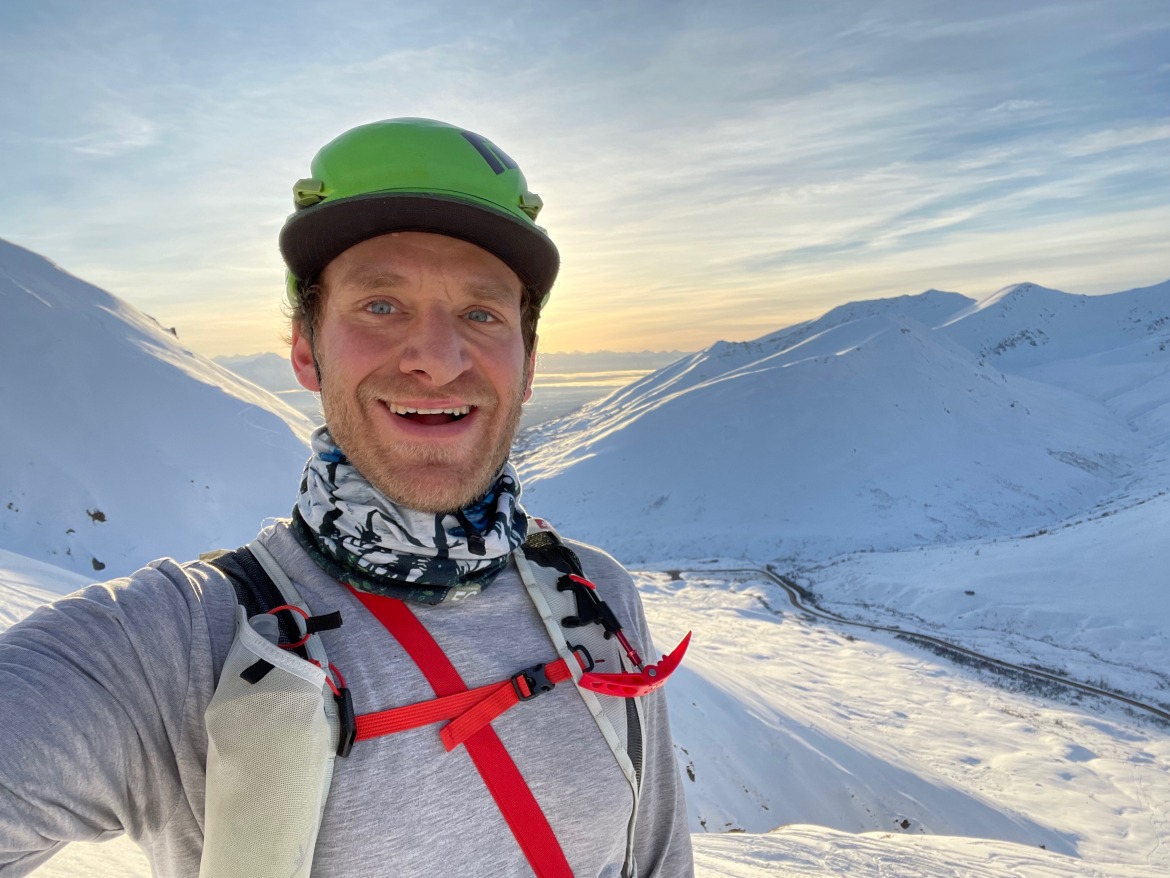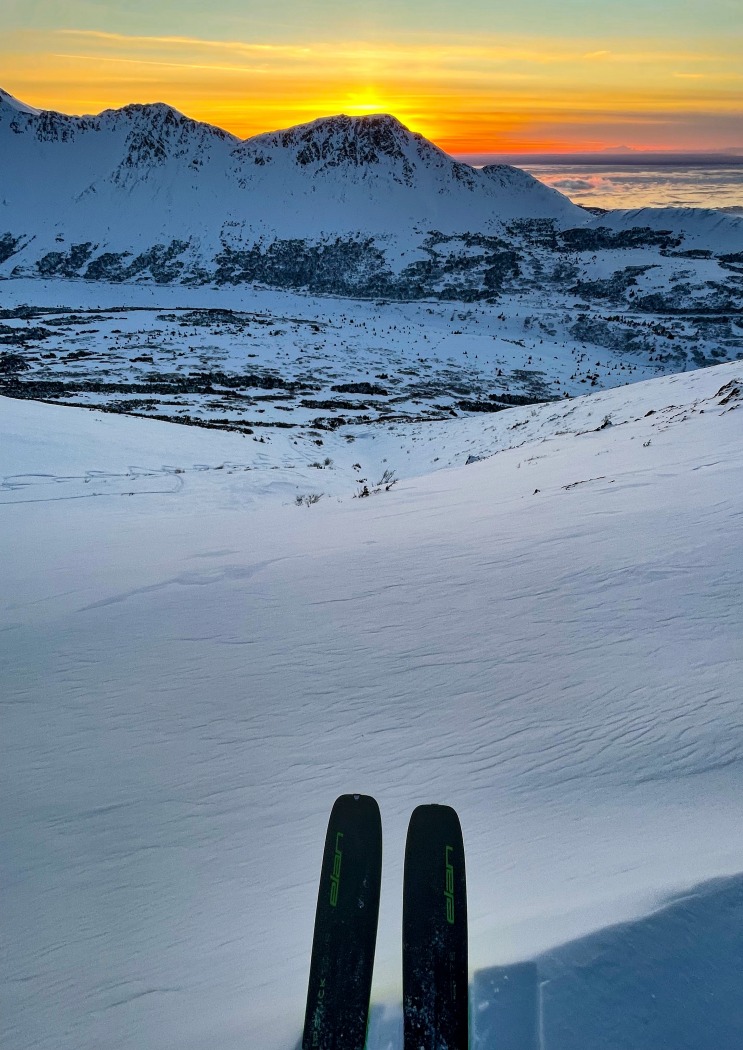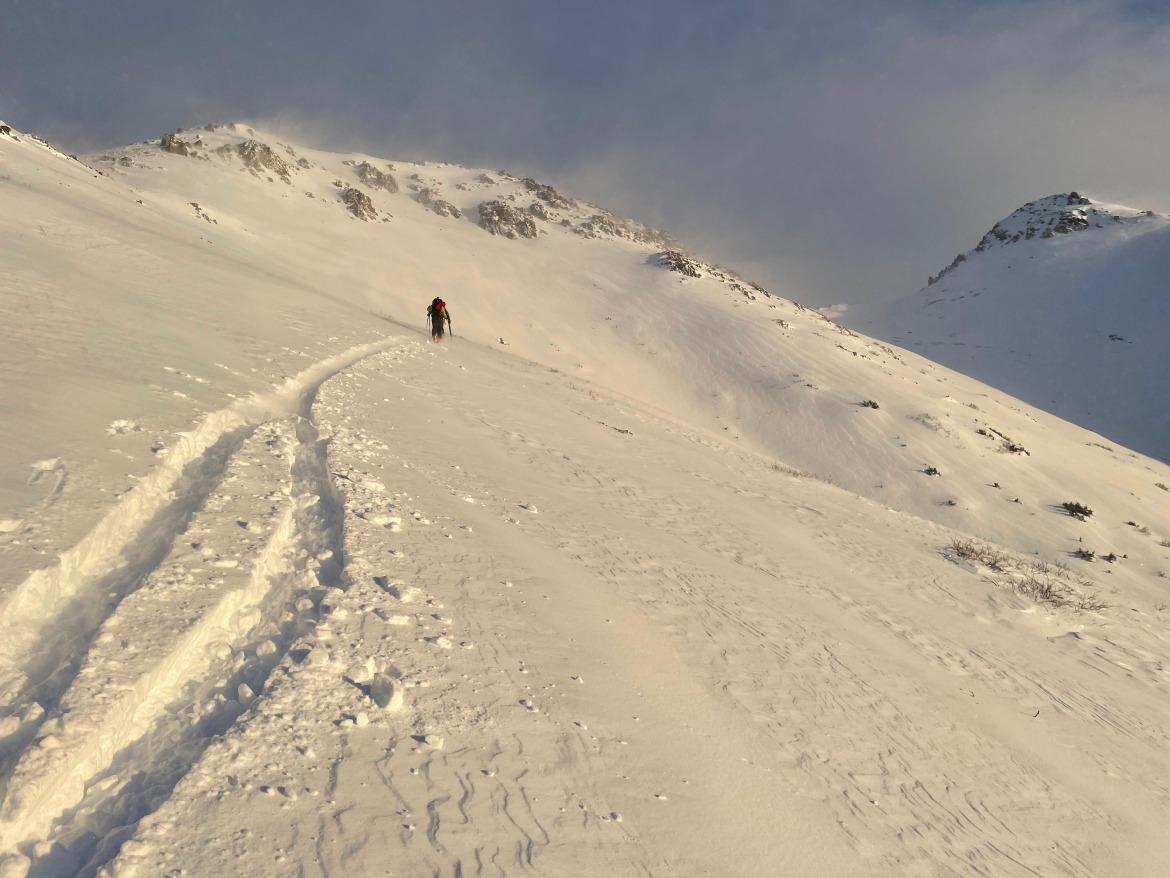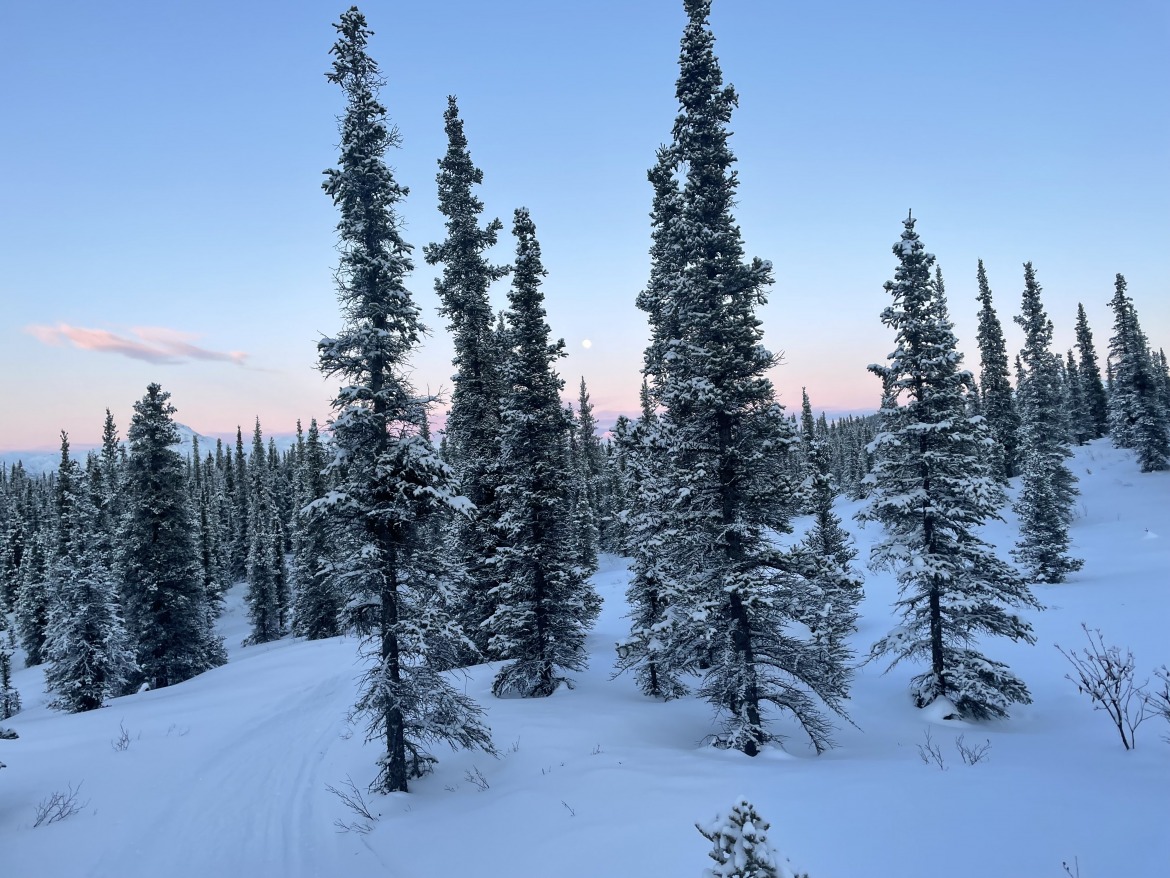For a mental reset, often nothing compares to a solo ski tour. Embarking on a solo mission requires self-awareness, a set of rules, and a willingness to follow those rules that at once may be personal but are in place to ensure safe travel. Alex Lee has some thoughts.
It snowed 42 inches at my house last week. On Friday afternoon, I skinned up Peak Two in the Front Range of the Chugach Mountains, just above Anchorage. This local high point is one of my favorite places.
On the mountain’s south side, a short low angle run at tree line sees the most traffic, though an interesting high south face often goes overlooked by those seeking smooth bases or fearing p-tex repairs in the garage. And a run off the peak to the southwest has some of the front range’s finest windboard most of the winter. No matter which run is on the docket, a quick 1800ft with nearly no approach is the only cost. Weekends might be for bigger peaks or longer tours, but the backyard mountains are a respite for the work day.
I rarely plan to go to Peak Two, but I seem to find myself there every week. That itchiness that shows up on Mondays boils over at unknown intervals, with me sneaking away from my desk to dart uphill trying to catch a 3pm sunset, or grabbing a headlamp and mittens when the zoomies need a post-work outlet. I am usually by myself.
On the popular south line, however, I am rarely alone, as Peak Two and neighboring Peak Three offer a common exercise zone for Anchorage skiers. However, in the darkest of winter, low tides of bad snow, or any run that veers from the standard, I usually find myself alone.
Rules of Engagement
Touring alone can elicit strong responses. I love skiing alone, but personally only venture solo under the following conditions:
1. I am in my home range.
2. Either the run obviously avoids any avalanche terrain or other terrain hazards, or the run is one I know well enough to be confident that the risk of avalanche is exceedingly low – It’s impossible to avoid risks in the mountains, but I want the risk of a car accident on the way to the trailhead to be higher than any risks while skiing.
3. Someone knows where I am.
The Community Weighs In
I checked in with a few friends who I trust to get some other takes on skiing alone, here’s what folks said:
Eric D., aging local crusher: “Solo skiing with low exposure (avalanche, steepness, temps, remoteness) seems acceptable to me. But anything that could be potentially harmful or result in disrupting others’ day is at best a dick move, and at worst life threatening.”
Dave B., Anchorage mountain goat: “I prefer skiing with friends and family, but skiing alone is better than doing anything else alone…The margin for error has to be lower. I got caught and carried while skiing solo last year for the second time (11 years later) and was grateful to ski away with only my mind rattled. Now I’m back to being the conservative guy in the group…”
Roman D., legend: “All the adventure sports have some bit of added reward when solo, but as I’ve aged—and especially since losing my own son on his own solo journey—I’m not so sure that the reward is worth the risk to loved ones who might be left behind should something go awry.”
Eeva L., snow science guru: “Backcountry skiing solo is a daring choice I make only on a rare occasion. There is no safety net if you blow the snowpack assessment or let the desire lead the way into inappropriate terrain. I also weigh the burden of being an avalanche professional. Even if there is a wide understanding that pros and recreationists are both vulnerable to mistakes, and that accidents happen to all types of users, I try very hard to walk the talk of good habits. Skiing solo is far from a good habit. I did ski solo last season when the snow storm produced amazing ski quality in the Chugach front range. I snuck out of the office on a Wednesday morning for a quick lap at the local milk run. I smiled to myself the whole time, getting the pleasant workout on the skin track and face shots on the way down. None of us are immune to temptations.
Taylor B., avalanche instructor, Denali guide, cold weather enthusiast: “I don’t really do it. But I know some people feel they can manage the risks and enjoy it.”
Najeeby Q., coach: “I do ski alone but only in places where I’m really familiar (know snow load zones, terrain traps etc..) and in cell service. Never when it’s super cold. I bike alone all the time, and it seems more risky to me when I think about injury/bears. But where I would personally ski solo is a much smaller set of options…”
Jeff C., OG: “[Skiing alone] can be fun because I set my own agenda and pace. But it can also be boring because I go to popular places and keep it conservative.”

Solo tours are obviously a great opportunity for the selfie – the author on a solo lap at Hatcher Pass.
There are days I won’t go up to Peak Two, days I won’t go to certain aspects or elevations, and days I’ll just tour up the short approach and scoot around in the alders. While I often say that I avoid avalanche terrain when skiing alone, the truth is I have seen slides on all of the common Peak Two lines. Some will say never do this, while others push solo skiing far further than I do.
I am risk averse in general, but even more so when alone. I love skiing with friends, but I also love the quiet and space that comes with being alone in the mountains, plus sometimes that itch just needs scratchin’. The common thread I found in talking with others about touring alone boils down to knowing your limits and knowing the terrain.
Anything else you would add?
More WildSnow related to solo skiing.
The No-Beacon-Day — Using Terrain to Minimize Avalanche Exposure.
Dr. Alex Lee lives in Anchorage, Alaska. Alex is a professor at Alaska Pacific University, teaching philosophy and environmental studies. He also works as a sometimes guide, naturalist, writer, and photographer.



